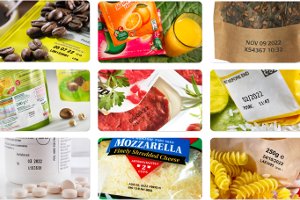Initiative launched to drive shift to more sustainable, MEK-free product coding
- Publicado el 17 de Junio de 2021
The latest undertaking within Markem-Imaje’s long-standing commitment to sustainability encourages the use of multi-purpose MEK-free inks which cut Volatile Organic Compound (VOC) emissions by up to 50%. The company is planting one tree in Peru for each case purchased, initially for a total of 3,000 trees. This will help restore biodiversity and improve conditions for local communities there, while helping to fight global warming, thanks to the CO2 stored in the wood.

There are many environmental consequences to packaging. Printing codes, such as expiry dates and lot numbers, onto products is no exception. The world’s most common coding method is continuous inkjet (CIJ). Most inks used are MEK-based and release VOCs, precursors to greenhouse gases. As part of a wider sustainability program, Markem-Imaje seeks to shift CIJ coding towards MEK-free inks which can halve these VOCs. Contributing to Reforest’Action efforts by planting 3,000 trees in Peru, one for every case purchased of its EB588 and FB655 inks, is the company’s latest step.
“We are conscious that our business can have knock-on effects on the environment, ” observes Sabri Mourad, CIJ Product Division Director. “As one of the world’s largest coding suppliers, we need to set the right example and drive change by defining a long-term research and development plan to formulate and produce inks for a more sustainable tomorrow.”
Being multi-purpose, these two inks can code most, and perhaps even all, of a plant’s primary packaging. This makes it easy for many companies to support reforestation, which itself benefits the environment, while reducing their own VOC emissions and cutting waste. MEK-free inks also result in up to 50% fewer additive cartridges to discard. The region of San Martin, in Northern Peru and part of the high Amazon, was originally covered with tropical forests and wetlands. Approximately 1.6 million hectares of primary forest have been cut down over the last fifty years.
The trees planted will help recreate forest ecosystems, providing a multitude of invaluable services for the climate, nature and local populations. For example, the area’s eroded biodiversity will be improved by giving butterflies, monkeys, frogs and turtles new shelters, while helping combat global warming.
Local communities will also benefit from better food security and income. The trees help regulate local temperatures and generate rainfall, improving agricultural yields. They also shelter food crops from too much sun or rain. Locals can pick the fruit of the planted lemon, mango and cocoa trees, while fast-growing species, such as acacia and rubber trees, provide wood and rubber without inhabitants sourcing this from the Amazonian forest. The harvests can be used for personal consumption or local trade.
Since its founding, Markem-Imaje continuously adapts its operations to be as efficient as possible. For example, since 2010 it has cut its water consumption by 68%, greenhouse gas emissions by 44% and waste by 12% while improving energy efficiency by 36%.
“Markem-Imaje started its sustainability journey way back in 1997 when pursuing the first ISO14001 certification for its Environmental Management System,” says Michelle Reed, Chief Compliance and Sustainability Officer. “Since then, we are always looking at ways to improve ourselves.”


























